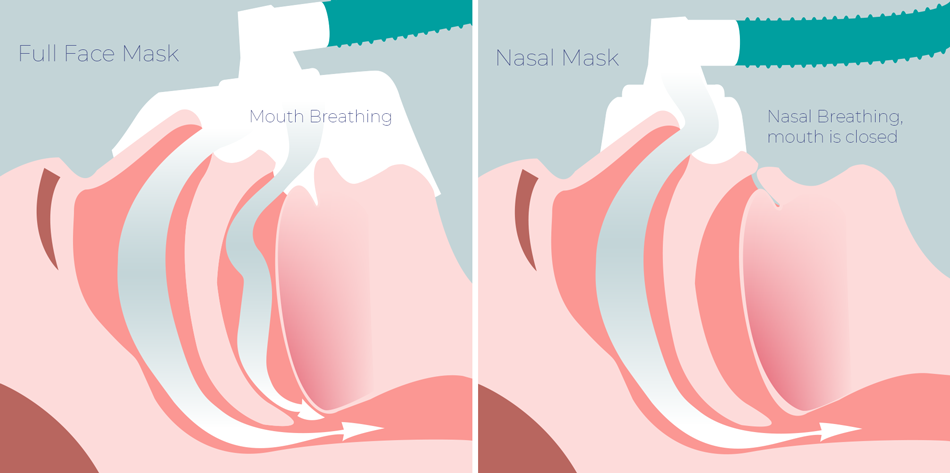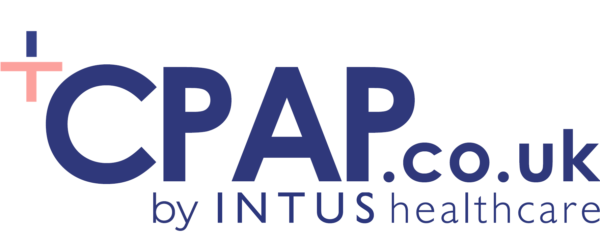What CPAP mask is right for me?
A CPAP Machine is primarily used to treat Obstructive Sleep Apnoea; a sleep disorder that causes multiple breathing interruptions throughout the night. It is typically caused by the throat collapsing, blocking or restricting the airflow. A CPAP machine blows air into the airway, creating enough pressure to prevent the airway from closing and therefore allowing the patient to breath without interruption.
Which is the best CPAP mask?
There is no one mask that suits everybody. Suitability depends on your personal requirements. The first question is how do you breathe? Do you breathe through your nose or your mouth? The next requirement is the size. The size is vital to get a good seal, so the air does not leak. Are you allergic to synthetic materials (silicone)? Finally, it is personal preference and comfort. The best mask is the right mask for you.
Which CPAP masks are compatible with my CPAP machine?
CPAP machines use a standardised 22mm connection, allowing you to use any CPAP mask with any CPAP machine. Please note that CPAP masks are not typically compatible with ventilators.

Do I need a prescription to buy a CPAP mask?
You do need to provide written confirmation of CPAP suitability when ordering a machine, but this is not required for a CPAP mask. You will need to tick a self-declaration of CPAP usage at the checkout but this is all that is required.
Intus Healthcare advice:
We find that most CPAP masks tend to last around eight months to twelve months. The exact life expectancy of a CPAP mask can vary on the specific piece of equipment and many other factors. One major factor is the level and frequency the mask is cleaned.
CPAP masks are a consumable item that needs replacing to maintain effective treatment.
Regular cleaning of all your CPAP equipment is highly recommended, especially your CPAP mask. A CPAP mask can have many individual parts that are used heavily and therefor wear out. The cushions that rest on the user’s face can wear out quicker than the straps or the hose.
How long does a CPAP mask last for?
The average life span of a CPAP mask is around 9 months; sometimes this can be longer and sometimes shorter. The life depends on a number of factors; how often it is used (and for long long), how it is a washed (and how often), the wearer’s skin oils and sweat levels and numerous other factors. Over time the cushion on the mask will wear out, much like if you were to wear the same shoes every day. When this happens, its ability to maintain a good seal reduces. Many CPAP masks have replacable cushions which provide a more cost-effective way of replacing the worn cushion rather than replacing the entire mask.
CPAP Mask’s silicone cushions
To make using a CPAP mask as comfortable as possible, manufacturers use silicone for the cushions, but the material can be affected by oils in the skin. If you use RemZzzs Mask Liners, you should experience fewer red marks, and you’ll also increase the usable life of your mask by reducing the oils that can damage the silicone material.
Other components from the mask’s headgear, cushions and pillows can stretch, and the tubing can develop tears and cracks.
How would I know when to replace my CPAP mask and other CPAP therapy equipment?
Examining the data card in your CPAP Machine to see how many apnoeas you have during the night is a good way of knowing how effectively your CPAP treatment is working. Please feel free to contact us directly if you want to know specifics about certain equipment or any other advice.
CPAP masks are a consumable item that needs replacing to maintain effective treatment.
Oils from your skin will damage the silicone in the mask seal. Depending on the type of silicone used, most mask seals will become also become softer overtime. When the mask makes a poor seal, air will escape and make your CPAP therapy much less effective. You or your partner might hear a hissing or burping noise from the air leak; you also may have very dry eyes in the morning. While you can tighten the mask straps to try to compensate somewhat, when the mask seal gets degraded sufficiently, you will need to replace your CPAP Mask.
How do I clean my mask?
In order to remain comfortable your CPAP mask should be cleaned daily, throughout its lifetime.
Clean your mask in the morning after each night’s use with some CPAP mask wipes or warm soapy water. Please be aware that non-CPAP mask wipes may contain alcohol which can damage your mask. In addition, regular washing of your mask and headgear is recommended on a bi-weekly basis. Your CPAP mask should be disassembled into it’s various components and along with the headgear, placed into a bowl filled with a solution of a mild soap detergent, or unscented washing up liquid and warm water.
Why is my CPAP mask leaking?
If your CPAP mask previously sealed well and is now starting to leak then the cushion may be reaching the end of its life. Through use the silicone used in most CPAP masks loses strength and becomes sloppier and therefore less able to maintain a seal. Tightening the headgear can offset this to a degree but eventually this will not be sufficient. This tends to happen after around 9 months but can happen earlier. Replacing the cushion should solve that problem; though if the cushion alone is not replaceable then a new CPAP mask would be required.
If the mask is new and even after following fitting guides and videos (most masks have excellent fitting guides on YouTube from other CPAP users that we recommend) but are still finding the mask leaks then it may be the wrong size. Leaks into the eyes are particularly suggestive of the CPAP mask being too big, either in height or width. A smaller size may solve the problem.
If the mask seals well initially but gets dislodged by your pillow when you change position, then you can consider a CPAP pillow. These feature cut outs designed for your CPAP mask to fall into when you sleep on your side and therefore stops the mask from dislodging. You can find our Ultra CPAP Pillow here.
How do I prevent red marks from my CPAP mask?
Red marks are caused by your skin being irritated by silicone. Often this can be reduced by loosening the headgear straps, reducing the pressure on the skin. However, if this causes air to leak then another solution would need to be found. A popular option is to use a CPAP mask liner to provide a protective barrier between the CPAP mask and your skin. In our experience the most popular and effective liners are the RemZzzs fabric CPAP mask liners. Another option would be to try a fabric mask, which put far less pressure on the skin and the fabric is far less likely to provoke a skin reaction than silicone. You can find the SleepWeaver CPAP mask range here.
Which CPAP masks work well with beards?
The most simple solution would be to use a Nasal Pillows CPAP mask, as this avoids contact with the skin. They instead use two cones that sit on the entrance to the nostrils. However if you require a full face CPAP mask then a little extra creativity may be required. Some bearded CPAP patients use lanolin to soften the hairs and allow the CPAP mask to fit more easily. Those with beards are advised to use a gel mask if possible, as the cushions are usually more adaptable and can often compensate for facial hair better than a regular silicone mask.
Learn More: The Best CPAP Masks for Beards
What do I do if my CPAP mask is causing nasal congestion?
Around a third of patients will experience nasal congestion when using a CPAP mask. The increased airflow through the nasal passages can dry them out and irritate. The use of a humidifier is often the solution to the problem, as this adds water to the air and provides moisture to the nasal passages. A humidifier also helps those who wake with a dry mouth. Another option for those with chronic sinus and nasal issues would be a nasal irrigator, such as the SinuPulse Elite. The SinuPulse Elite flushes out the sinuses with a salt solution, helping to reduce inflammation, moisturise the passages and clear blockages and congestion. Regular nasal irrigation can have significant health benefits.
